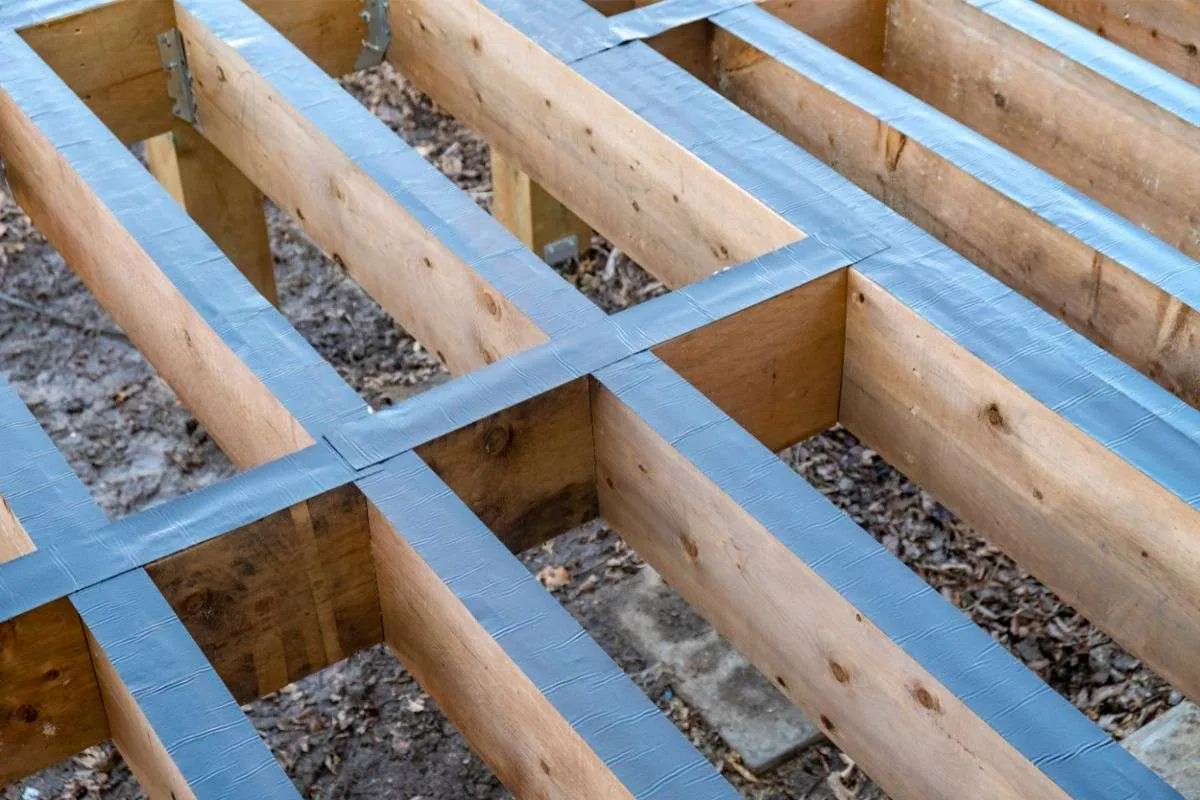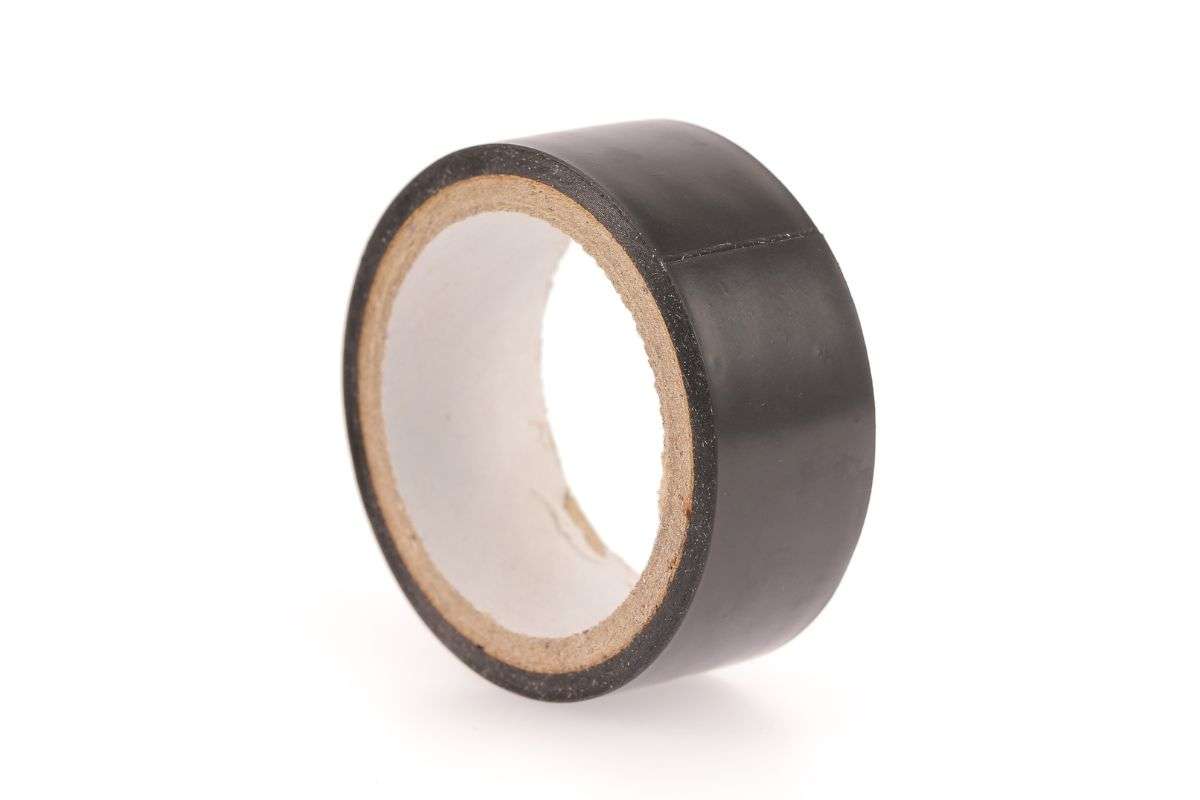Building your very own outdoor deck requires a lot of skill and a lot of equipment.
This means that the cost of tools and equipment alone can build up to a pretty high price, and that’s before you add on other costs like materials.

As a result, we’ve seen a lot of people try to cut corners to help keep costs down, and one thing that is often the first to go is joist tape.
But should you really be ditching joist tape, or is it a necessary part of building your own deck?
Here, we are going to be talking about joist tape and taking a look at how necessary (or unnecessary) it is for your deck build.
This way, you can work out whether or not you really need to purchase some and add it to your deck.
What Is Joist Tape?
First, let’s cover the basics – what exactly is joist tape, and what does it do?
Joist tape goes by many names.
Deck tape and flashing tape are two of the most common names used, but they all refer to the same thing – it’s a permeable membrane with a self-adhesive layer that is also waterproof and water-resistant. Often made from Bitumen, Butyl or Acrylic. Butyl is the material of choice among major composite brands like Trex, TimberTech and Deckorators.
like Trex, TimberTech and Deckorators.
It’s usually added to the top edge of your deck’s joists, and frame before the deck boards are installed on top.
It sticks down just like any other tape and is added for one major reason – to help extend the life of your deck’s wood joists.
The tape acts as an impenetrable barrier between the joists and any water that drains down. Or, as I like to think of it, a roof for your joists.
Joist tape capping the wood joists helps protect the wood from damage (such as rot) that is caused by moisture from rain, snow, or simply washing on your deck.
Is Joist Tape Necessary?
Joist tape may seem insignificant at a glance, but it’s actually a very important step in building your own decking that should not be underestimated.
If you want your deck to last for years and years, then joist tape is definitely necessary to add.
Why?
Wood is a vulnerable material when exposed to water. Over the years, your deck’s wooden frame will be exposed to water and damp grunge that builds up between decking boards, and this can lead to rot and decay.
Your joists will soften and lose their structural strength as they rot right under your feet. Leading to your deck becoming unsafe for use and requiring premature replacement. Long before it should be, costing you way more than the cost of joist tape.
It can take as little as 8 to 10 years for joist to rot. Even pressure-treated joists. I know. They just don’t last like they use to.
If you opt for composite decking rather than wooden boards, the frame underneath is not going to last as long as the decking. Which comes with a minimum 25-year warranty but many of the best composite decking warranties are even longer.
are even longer.
As a result, this wood substructure needs protection if you want to extend your deck’s lifespan.
Joist tape provides that protection by acting as a barrier between moisture and pooling water, and your deck’s joists.
This barrier prevents water from penetrating the wood of the joists and beams. Yes, joist tape on beams is a good idea too.
This lack of moisture makes it much more difficult for rot fungus to affect your decks and so, it takes much longer for the fungus to eat away at your timber.
Fungi needs water to live without water. Wood will not rot.
So, while joist tape may not look like a lot, it’s actually vital for extending your deck’s lifespan.
It costs a lot to build a deck, so if you want to get more use out of your deck and get more value for your money, then joist tape is a must.

What To Look For In Your Joist Tape
There are a lot of different brands of joist tape out there, so it’s vital that you do your research to find the best possible joist tape for your deck’s substructure.
Here is a list of all the things we consider when checking out a new brand of joist tape – read the information below and keep it in mind during your own research!
Materials
The two most popular types of material for joist tape are bitumen and butyl.
Butyl tape is widely regarded as the better material because it’s easier to cut and stick to wood better, performs better in high temperatures as it does not ooze, and provides a better seal around fasteners and screws.
This means that out of the two, butyl joist tape provides a better level of protection for your joists. So, it just makes sense to use butyl tape.
Bitumen (Asphalt) tape is often chosen because of its price. But it can react with composite decking material, especially PVC. Plus, it is not as durable.
A third option which is not as popular but is even easier to install is Acrylic. Brands like G-tape are my favourite joists tape, but it does cost more. But its durability and ease of application keeps me buying more. But click the link for my full review of deck joist tape and why.
and why.
Thickness
It’s important to select the correct thickness of joist tape.
If you choose a tape that is too thick, then it may be difficult to install your deck boards on top, but if your tape is too thin, then this can affect its durability over the years.
Warning, the 3 different materials will complicate this.
Most quality Bitumen joist tape is available between 20 mil and 40 mil, so a tape in this range for thickness is a good place to start.
With butyl, 20 mil is the best thickness.
Acrylic joist tape will be even thinner but will still protect your joist. The advantage of being thinner is easier application.
As for tape width, 1 5/8″ is sufficient to cover just teh top of the joists.
I prefer 2″ wide joist tape for 1 1/2″ joists. The extra width allows you to fold over the edges, increasing the level of joist protection. Plus, the additional width gives you a little more play. It doesn’t have to be perfectly centred on the joists.
For beams, 2 ply can be protected with 3 1/8″ wide. Larger beams will require wider tape, 6″ or 9″.
To protect rim joists, 9″ or 11″ tape is ideal. Just make sure to wrap the tape on top of the joist over the side tape to further guide the water away.
It’s important to avoid any wrinkles as they become the weak point in the tape. Again, an advantage of acrylic tape is you can pull it apart if it sticks to itself. Or even reapply it to the wood if you need to smooth it out.
Also, make sure to install the tape so that it overlaps at the joints.
Price
Every brand will vary in cost. While it may be tempting to go for a cheaper brand to help keep costs down, this can result in you getting a lower-quality tape that provides less protection to your deck. Or increases in the amount of time it takes to install.
The range is big. From around $15 for a 1 1/2″ X 50′ roll to $50 for the same size roll.
Increasing the width will compound the cost.
So, for a 12′ x12′ deck, you are looking at as low as $45 and as much as $150.
Increase the number of joists or deck sizes, and the price will go up accordingly.
Compared to the thousands you will spend on the joists, it’s well worth it.
When considering between $15 a roll and $50, do consider application. If it takes you twice as long to install, is the $100 difference worth it?
Where To Buy Joist Tape
Joist tape is very easy to source and purchase from a variety of different places.
Any good local building supply store will likely have a few brands for you to choose from, and the options are endless online.
Online Amazon offers a huge range of joist tapes from different manufacturers, as do places like Walmart
offers a huge range of joist tapes from different manufacturers, as do places like Walmart , Wayfair, Home Depot, and Lowe’s.
, Wayfair, Home Depot, and Lowe’s.
Or you can check out Best Deck Joist – Buying Guide. Where I go through some of the top brands, which ones are best and links to order them.
Deck specialty stores are even better for selection and only offering the good stuff.
Final Thoughts
So, is joist tape really necessary to add when building your own deck?
Absolutely!
Adding joist tape to your decking frame’s joists can help extend the life of your deck.
Meaning that you get more use out of your deck. Decreasing its overall cost.
Even if you are using composite decking rather than wooden deck boards, you should add joist tape to the wooden joists to ensure the joists last as long as the decking.
If you are using a different material for your deck’s frame, then joist tape won’t be necessary, as it works to help protect wooden timber from moisture.
But, if you are using wood to build your deck’s frame, then joist tape is definitely necessary.
